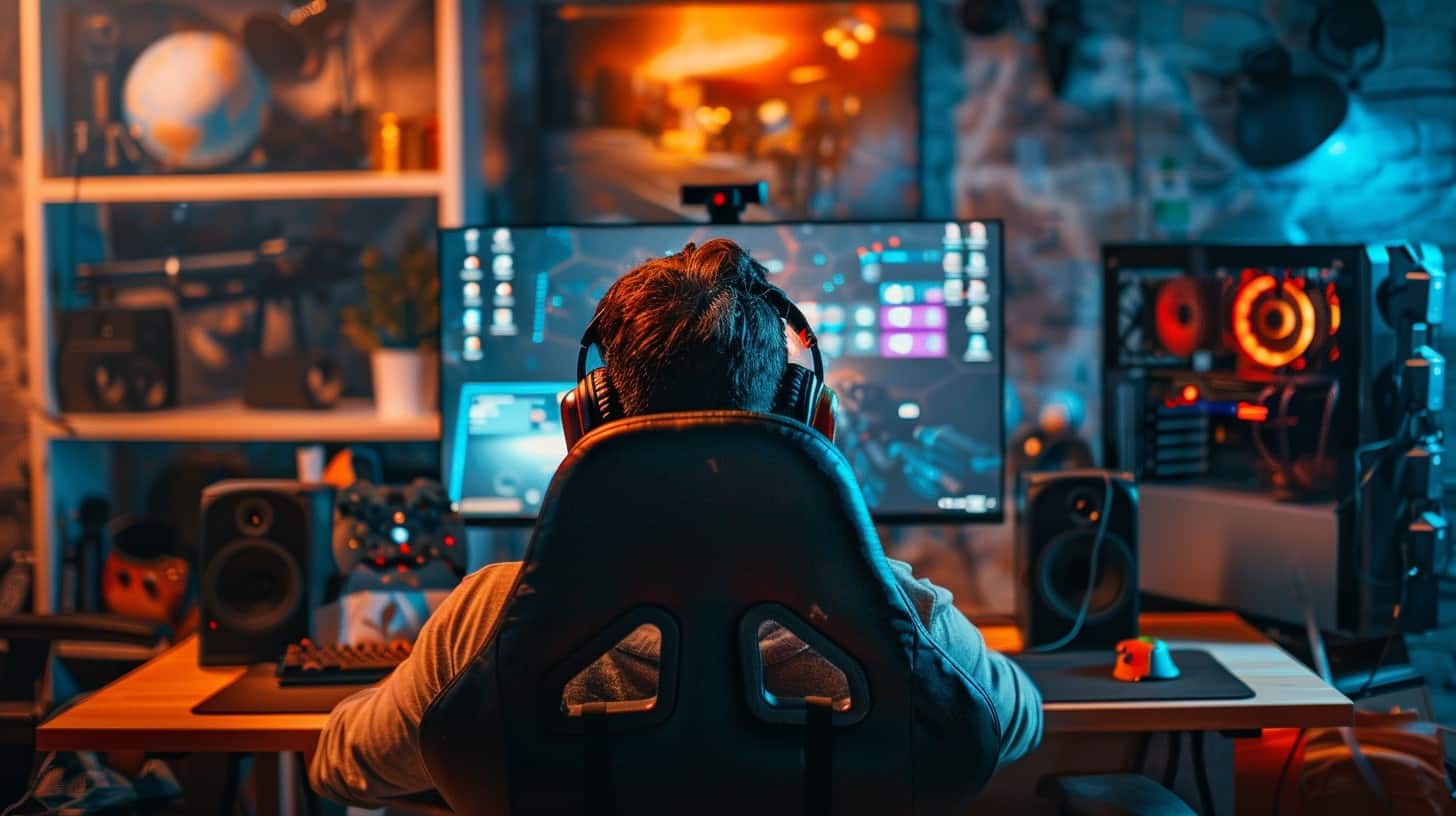Struggling to up your game in those intense shooter battles? Let’s face it – accuracy is everything. If you can’t hit your targets, you’re toast. But fear not, my friend, because this guide has the goods to turn you into a sharp-shooting machine.
Here’s the deal…
Key Takeaways
Analyze your gameplay to identify weaknesses and areas for improvement, such as crosshair placement, map awareness, and shooting accuracy.
Optimize your game settings, including mouse sensitivity, crosshair customization, graphic settings, and keybindings, to enhance performance and accuracy.
Practice regularly through aim drills, high-pressure situations, and strategic positioning, utilizing cover and high ground effectively.
Maintain composure and focus during intense gameplay by employing strategies like deep breathing, positive self-talk, and staying hydrated.
Consistent practice and dedication are essential for mastering accuracy and overall skill in shooter games.
Table of Contents
Understanding Your Weaknesses
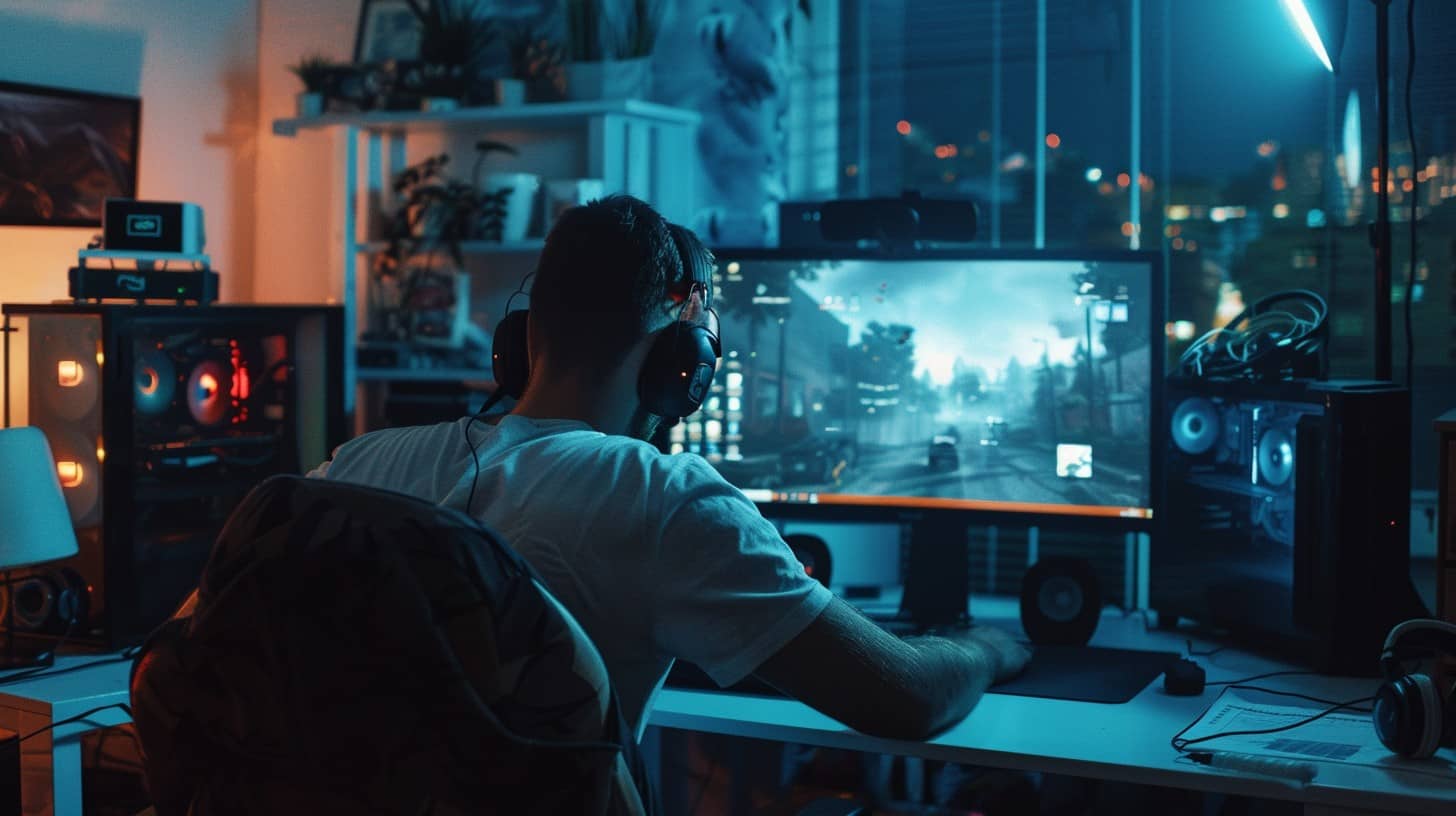
Getting better starts with understanding your shortcomings. — Analyze where you’re dropping the ball, spots you whiff easy shots.
An honest self-assessment is key… it highlights weaknesses to focus on. No sugar-coating — embrace those flaws, work to improve them.
Analyzing your gameplay
You won’t improve if you don’t know what’s holding you back—record your gameplay, watch it back. Did you miss shots you should’ve hit? Died in stupid ways? Analyze… dissect every kill, every death.
Where were your crosshairs? Were you peeking angles properly? Get real with yourself—no sugarcoating, be brutally honest. Identifying weaknesses is step one.
Need help seeing flaws? Ask a buddy to review recordings, get that second set of eyes. Or hop into a custom game alone—recreate situations that gave you trouble, try different approaches.
Importance of Mouse Sensitivity
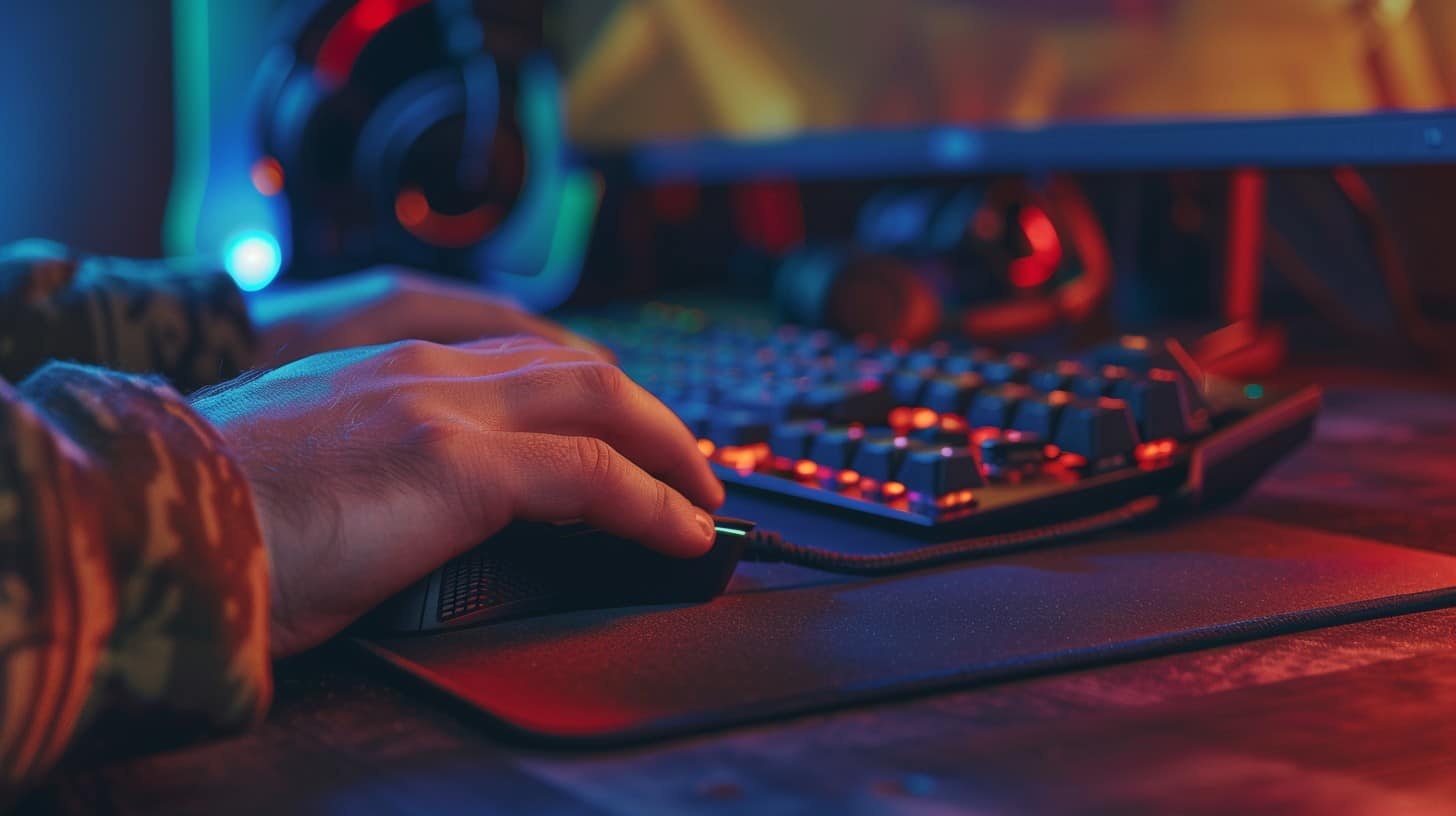
Mouse sensitivity is crucial for accuracy. Finding that sweet spot – not too high, not too low – can make a huge difference.
It takes practice and tweaking to hit the nail on the head, so don’t be afraid to experiment. Getting this right is step one to becoming an FPS beast.
Finding the perfect sensitivity
Finding the sweet spot – that sublime balance where your mouse glides with precision yet remains nimble? Crucial! Too high and you’ll be spinning like a top, too low, and you’ll feel sluggish – neither ideal for outplaying opponents.
Experiment, tweak, test… rinse, repeat till you uncover that Goldilocks zone. Oh, and embrace a low DPI – it promotes consistency. But hey, don’t overthink it – sensitivity’s personal, so trust your senses.
Some pro gamers rock ultra-low sensitivities for laser-focused accuracy, while others prefer a moderate sweet spot that affords both precision and maneuverability. Whichever floats your boat – nail it down through meticulous trial-and-error.
Training with different sensitivities
Finding the perfect mouse sensitivity is just step one. Now let’s move on to training with different sensitivities … exploring a range helps build flexibility, versatility – keeps you on your toes.
- Start low. Go way lower than your usual setting – it’ll feel painfully slow at first, but stick with it. Low sens develops precision aim, steady tracking.
- Crank it high. Like, ridiculously high – whipping across the screen with tiny movements. It’s chaotic, but forces you to make micro-adjustments … boosts control.
- Randomize daily. Don’t just gravitate to your comfort zone. Mix it up – low one day, high the next. Keeps those aim muscles guessing.
- Situational switching. Use different sensitivities for different roles, maps, weapons. A sniper needs steadier aim than a shotgun rusher, yeah? Versatility wins.
- Incremental steps. Don’t jump straight from low to crazy – high. Work your way up gradually – small increases allow your brain to adapt smoothly.
- Time constraints. Set challenges – hit X headshots in Y seconds at each setting. The pressure builds those fast-twitch skills.
- Varying grips. Palm? Claw? Fingertip? Each grip style favors certain sensitivity ranges. Master them all for total flexibility.
Sensitivity is a skill like any other – gotta stretch those muscles regularly. Embrace the chaos, control the craziness. That’s how you hone true all-around accuracy.
Optimizing Crosshair Positioning
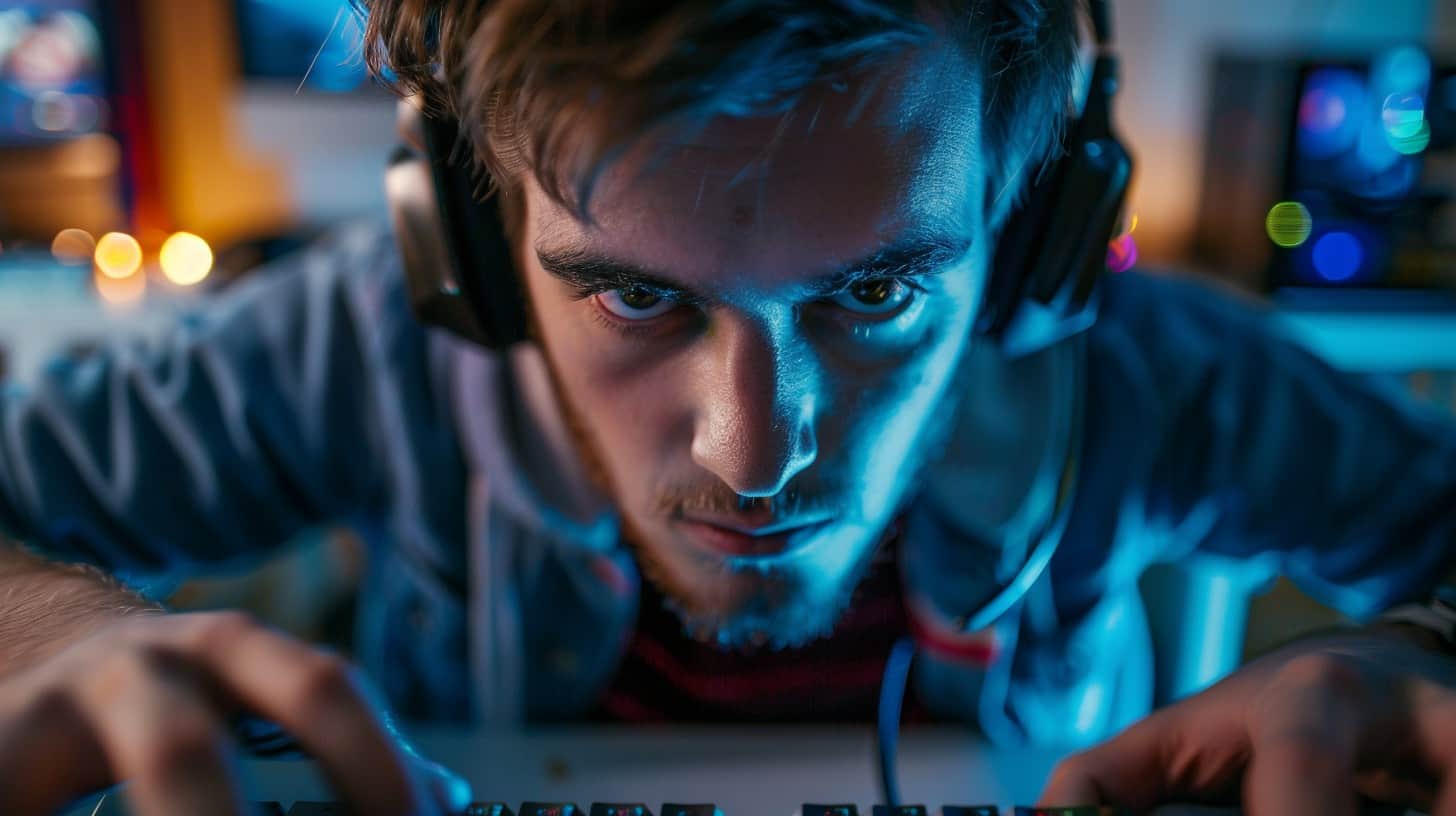
Crosshair positioning is huge–keeping your crosshair at head level can save you in those split-second encounters. You’ll be ready to strike before they even realize what’s happening.
Proper pre-aiming on common angles and paths gives you a serious edge.
Tips for better crosshair positioning
Keeping crosshairs positioned correctly is crucial. It improves reaction time, enhances target acquisition.
- Practice keeping crosshairs at head level — where enemies appear. Muscle memory is key.
- Adjust sensitivity for smooth, controlled crosshair movement. Too high? Overcorrections. Too low? Sluggish.
- Anticipate enemy locations — place crosshairs pre-aimed. Common camping spots, choke points.
- Let recoil reset before re-aiming. Don’t overcompensate mid-spray.
- During reloads, position crosshairs defensively — near corners, doorways. Stay ready.
- Strafe to keep crosshairs steady. Minimize unnecessary movement.
- Customize crosshair. Thin with gaps? Thick and solid? Find what works best.
- Record gameplay. Analyze crosshair placement mistakes, room for improvement.
The path? Consistent practice — aim training maps, deathmatch. Develop the habit. Nail crosshair placement.
Customizing Your Crosshair
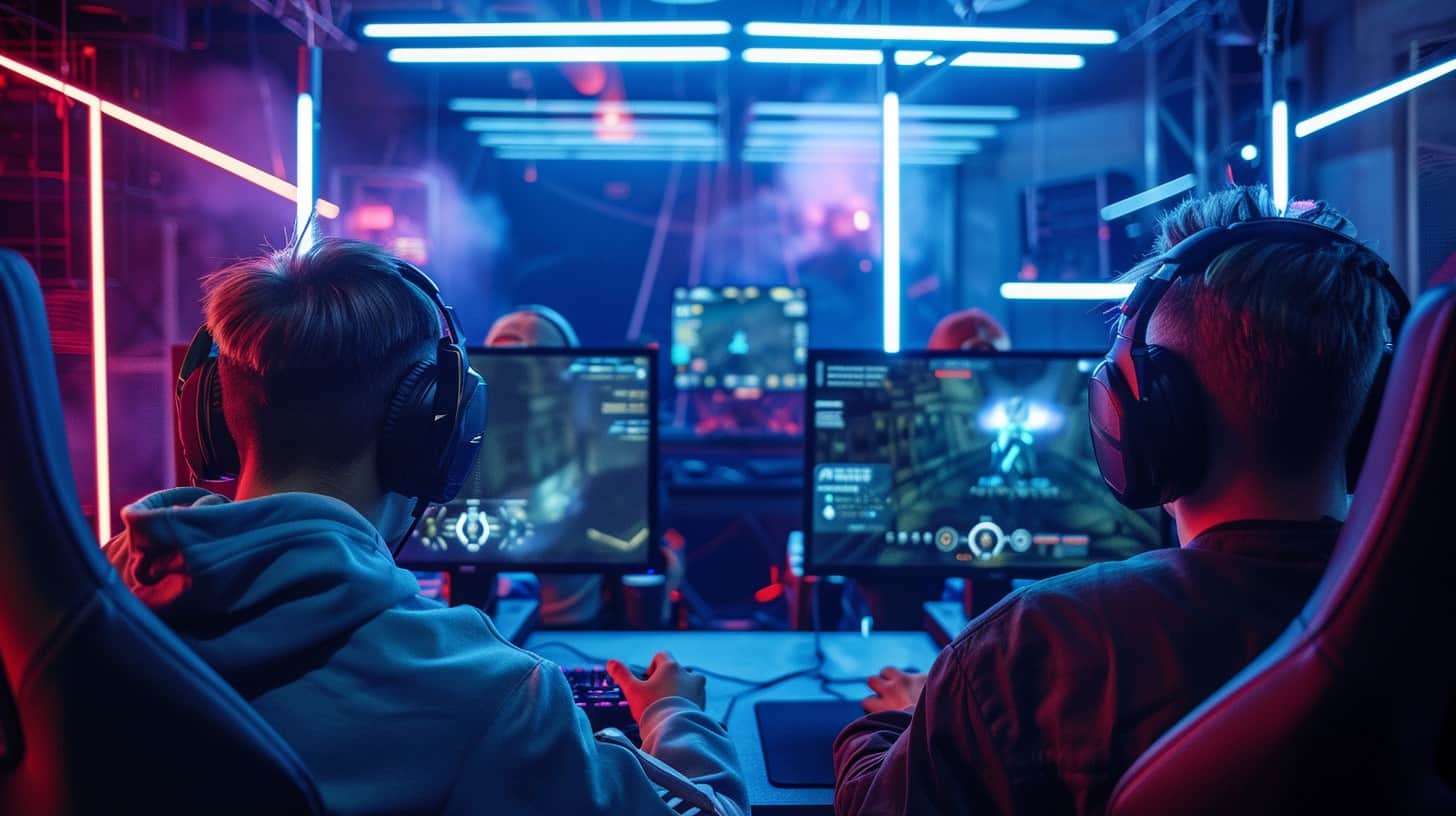
Your crosshair customization is an underrated yet vital aspect of improving accuracy. A well-designed crosshair can mean the difference between hitting and missing those crucial shots — so don’t overlook it! Experiment with different colors, sizes, and shapes until you find that sweet spot for your eyes.
Choosing the right color
Your crosshair color impacts visibility – go bold or subtle. Bright hues stand out against backgrounds… but they’re distracting. Muted shades blend in – good for minimal interference, bad for tracking targets.
Find that sweet spot: visible yet unobtrusive. I prefer a vibrant red crosshair, crimson against darker maps, pink-orange on brighter ones. The color gives me a precise aiming point without dazzling my eyes.
Experiment, see what clicks. Maybe a lime green crosshair complements your visual processing. Or a deep purple adds punch without overpowering the screen. The ideal shade enhances focus, letting you snap onto enemies swiftly.
Adjusting the size and shape
Adjusting your crosshair’s size and shape is crucial. These two elements directly impact target acquisition and precision. Here are some pointers:
- Crosshair Size:
- Smaller crosshairs aid precision – they’re less obtrusive.
- Bigger ones help with target tracking at distance.
- Find the sweet spot; too tiny makes acquiring targets difficult.
- Crosshair Shape:
- Classic shapes like dots, crosses work well for most scenarios.
- Open – circle crosshairs reduce target obscuring.
- Unconventional ones (custom shapes) take getting used to.
- Color Matters:
- High contrast with the environment prevents blending in.
- Consider colorblindness, adjust accordingly.
- Neon colors grab attention, but may strain eyes.
- Opacity and Outline:
- Slightly faded crosshairs appear less jarring.
- Outlines enhance visibility against busy backdrops.
- Pulsating ones signal cooldowns, reloads.
- Dynamic Sizing:
- Enlarge when shooting, shrink when still.
- Emphasizes accuracy for sniping, quickscoping.
- Smaller crosshairs at distance compensate for weapon sway.
Tweak, analyze replays – the perfect crosshair setup amplifies your skills. Don’t overlook this key aspect of aim optimization.
Importance of Map Awareness
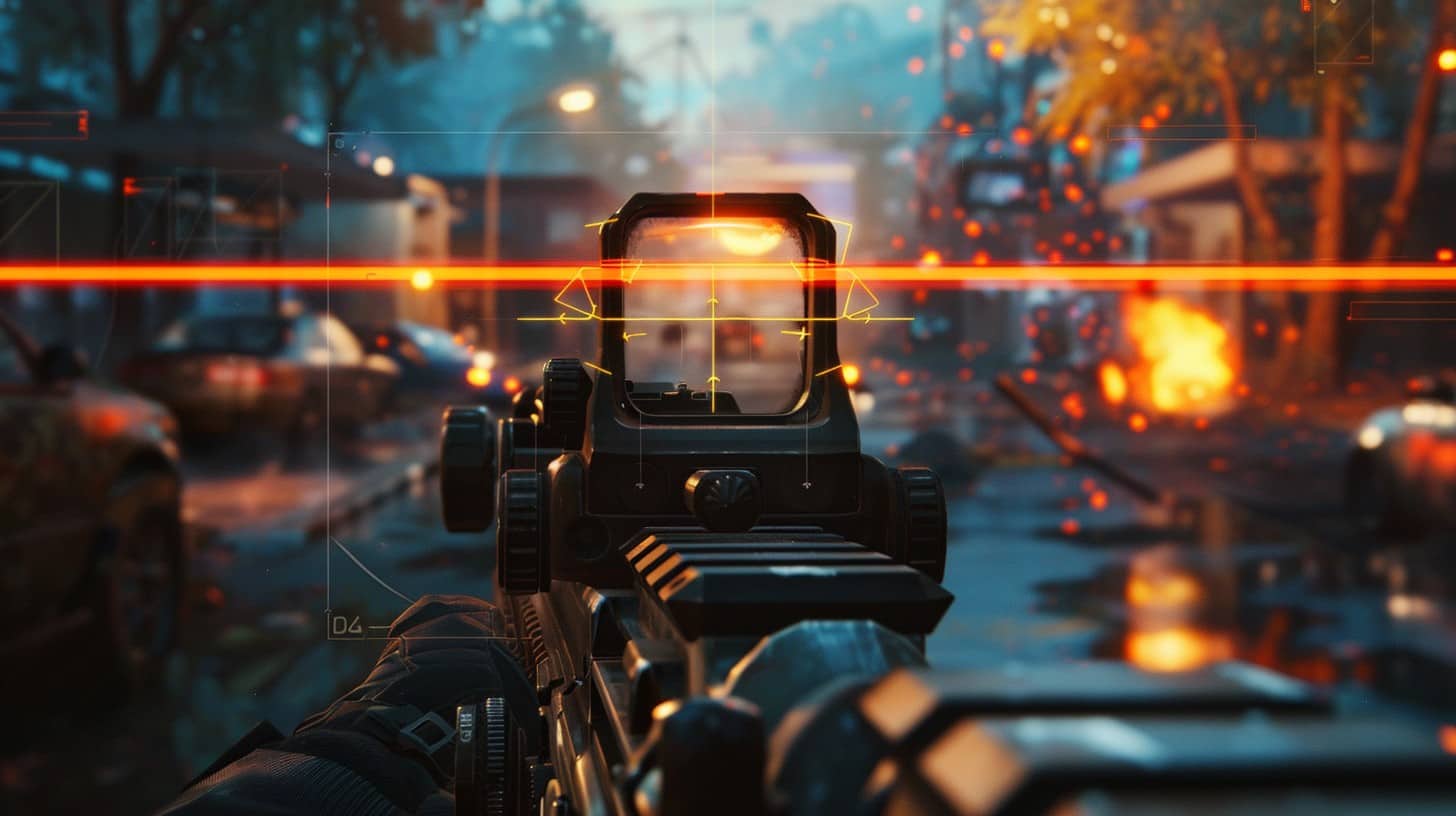
Map awareness is key – know the layout like the back of your hand. Every corner, every potential camping spot… you gotta be one step ahead.
High traffic areas are goldmines – but they’re also danger zones. Identify those hotspots, watch your back, and make strategic moves.
Learning the map layout
Learning the map layout is pivotal. It grants you an edge, letting you control high-traffic zones.
Here’s how to nail it:
- Study the map – zoom in, scrutinize every nook and cranny. Visualize paths, corners, hiding spots.
- Pinpoint key areas – where the action happens, chokepoints to lockdown, vantage points with solid cover.
- Memorize spawn locations – so you can predict enemy movements, set up ambushes.
- Mark high-risk zones on your mental map – places snipers lurk, grenades rain from.
- Practice, practice, practice – load up an offline game, run laps until the layout is ingrained.
- During matches, call out locations precisely – your teammates will appreciate the clarity.
- Adapt your strategy – as you get more map-savvy, find new tactical plays, outsmart foes.
Map knowledge? It’s a game-changer – allowing you to outthink, outmaneuver…and just flat-out own your opponents. Put in the work, own that map.
Understanding spawn points and high traffic areas
Mastering the map layout is key, but spawn points and high-traffic zones? Those are game-changers. Think about it – you know where enemies might pop up, right? Exactly, those are spawn points.
And those busy intersections everyone scrambles through? High-traffic hotspots. Nailing these two lets you get the drop on foes, or avoid ambushes.
It’s like having a sixth sense for where the action’s about to go down. You’ll instinctively know the best firing positions, choke points to control – the whole nine yards. Catch my drift? With this intel under your belt, you’re not just wandering aimlessly… you’re a freaking predator, stalking your prey with cold, calculated precision.
Effective Communication with Teammates
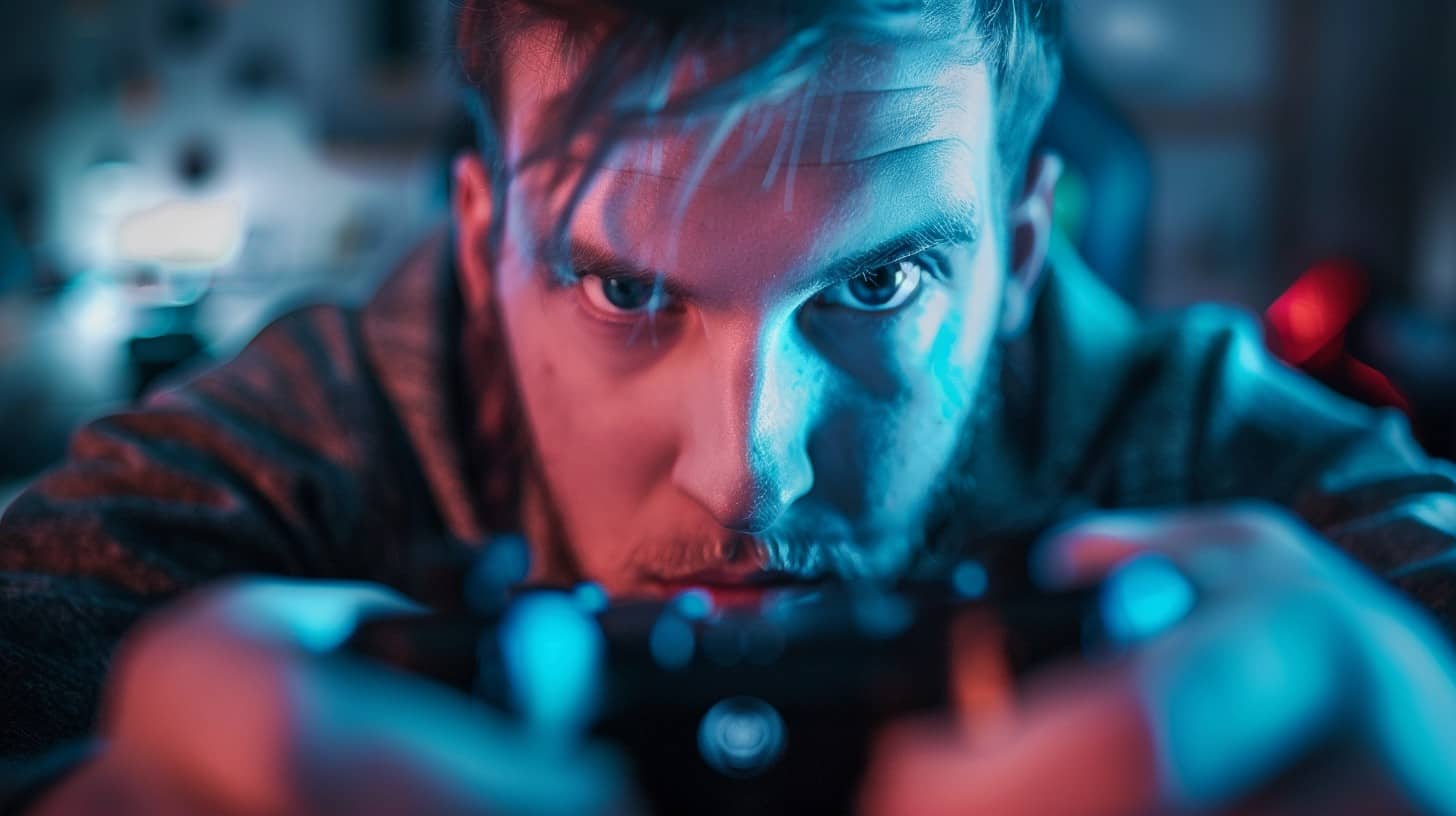
Good team communication can straight up win games—it’s vital. Callouts, strats, rotations—get on that voice chat and stay locked in with your squad. But there’s another layer to effective comms: gamer lingo. Understanding and using gamer lingo helps streamline communication, allowing for quicker calls and responses during high-stress moments. Whether it’s abbreviations like “GG” for “good game,” “GLHF” for “good luck have fun,” or map-specific callouts, mastery over this language keeps your team on the same wavelength and a step ahead of the opposition.
Solid comms create opportunities and mitigate chaos… eliminating the need for lone-wolf plays that often end in disaster. A tight team is unstoppable, more so when everyone’s fluent in gamer lingo—it’s like having your own secret code that speeds up decision-making and execution.
Importance of callouts
Callouts are a game-changer in shooter games – they let your teammates know enemy locations, strategies, and more. Effective callouts lead to better coordination, anticipating enemy moves, and planning counterattacks.
Mastering callouts takes practice, but it pays off big time – your team becomes a well-oiled machine, decimating foes.
Clear, concise callouts make all the difference. Use cardinal directions, map callouts – anything to pinpoint threats accurately. Vague callouts confuse teammates – be specific.
Using voice chat effectively
Effective communication through voice chat is a game-changer. It streamlines real-time callouts—alerting teammates about enemy locations, strategies, and more. Coordinating with your squad becomes seamless—everyone’s on the same page, moving as one unit.
Enhances teamwork? You bet! But here’s the kicker: clear, concise callouts matter just as much as using voice chat itself. Rambling gets you nowhere—keep it snappy, direct.
Voice chat’s a powerful tool; utilize it right for that competitive edge. Clear comms translate to quicker reactions, better decision-making under pressure. Next up? Understanding bullet drop and recoil patterns…
Importance of Shooting Accuracy
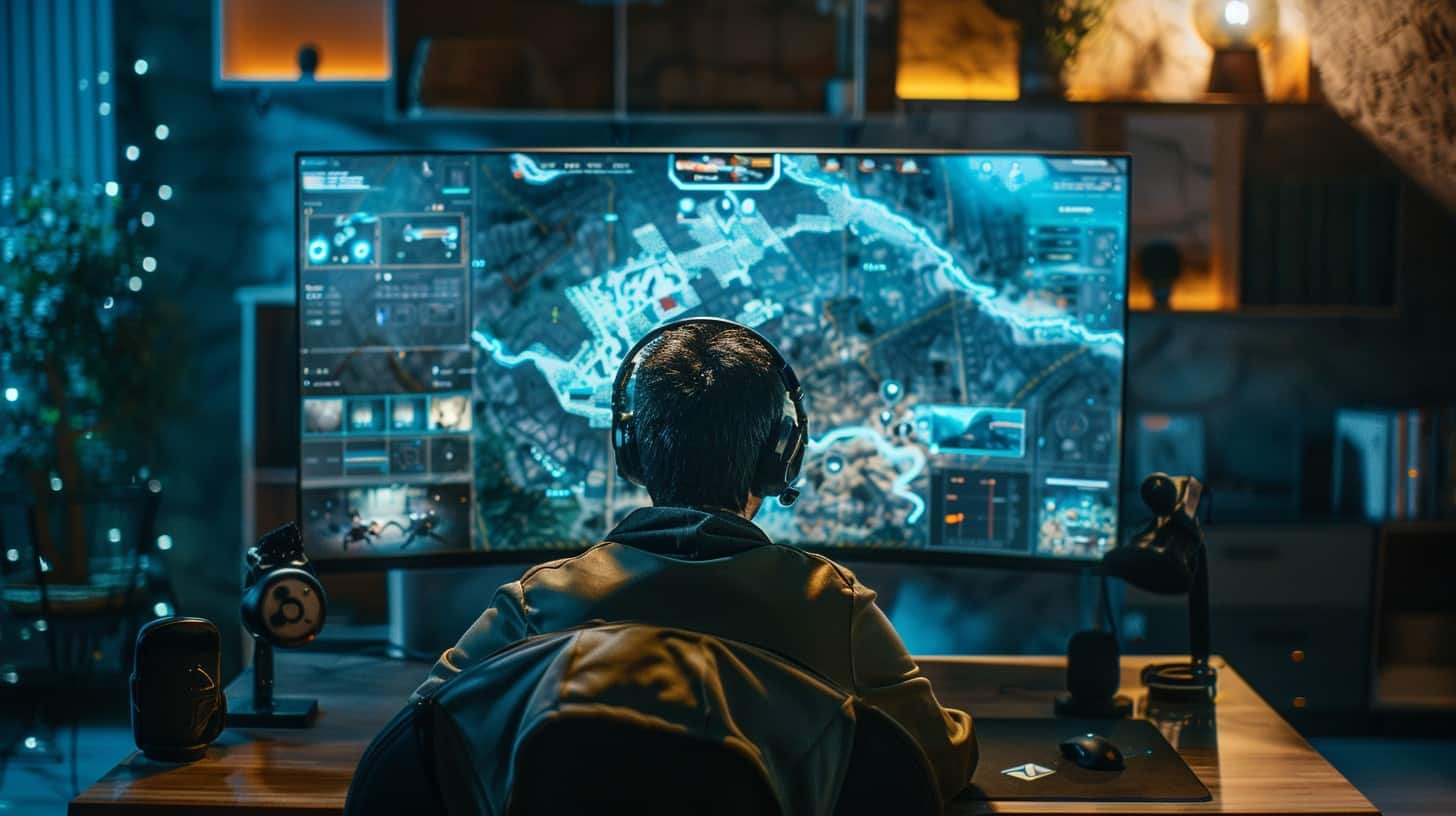
Shooting accuracy is crucial—it separates the pros from the amateurs. But don’t worry, you got this! With some focused training and practice drills, you’ll be landing headshots like a boss.
Mastering recoil patterns and bullet drop might seem daunting at first..but once you get the hang of it? Game-changer! Spend time in the firing range, experiment with different guns and distances—your aim will level up in no time.
Practicing aim drills
Shooter games demand precision aiming. You need consistent accuracy drills to elevate your game.
- Aim trainers – download dedicated aim training software like Aim Lab or Kovaak’s. They offer custom scenarios, tracking exercises to sharpen your crosshair skills.
- In-game drills – utilize training maps, deathmatches within your chosen game. Engage moving targets, flickshots from various angles/distances.
- Static targets – start slow, steadily progress to more dynamic scenarios. Static targets help reinforce muscle memory, smooth cursor movements.
- Focus on weak areas – analyze your gameplay, identify weaknesses (e.g. tracking moving targets). Tailor drills accordingly for those specific skills.
- Mix it up – variety prevents stagnation. Switch between stationary, moving, flickshot drills to cover all bases. Your brain adapts quicker.
- Be patient, consistent – aiming is muscle memory. Commit 30 mins daily for best results. Adjust sensitivity, crosshair while getting comfortable.
Key ingredients? Dedication, analysis of weak points and smart, focused practice sessions. Sharpen your skills – one drill at a time.
Practicing in high-pressure situations
Practicing in pressure-cooker scenarios is crucial. Why? Because you gotta get used to keeping your cool when the heat is on – that’s how you’ll nail those clutch shots.
Here are some tips:
- Play competitive matches or ranked games. The stakes are higher, ratcheting up the intensity – perfect for building mental fortitude.
- Set up custom games with bots cranked to the max difficulty. Overwhelm yourself by letting them flank and swarm you relentlessly.
- Load up an aim trainer with distractions – explosions, screaming voices, flickering lights. It’ll test your focus amidst chaos.
- In games like Sweet Bonanza, taking calculated risks often pays dividends. Master when to be aggressive for bigger rewards.
- Join a “retake” server. You’ll spawn into insanely lopsided situations, forcing you to make split-second, high-stakes plays.
- Record and rewatch your toughest losses. Analyze where you cracked under strain to improve next time.
- Purposefully put yourself into 1vX situations during matches. Nothing raises the heart rate like being the last player standing!
The more you expose yourself to stressful in-game moments, the better you’ll handle them. Stay frosty, stay focused – dominate the pressure.
Strategies for staying calm
Keeping your cool is key. Staying calm under pressure separates the great from the good.
- Take deep breaths – inhale, hold, exhale slowly. Breathe with your diaphragm, not shallow chest breaths.
- Focus on the present moment – don’t dwell on past mistakes or future “what-ifs.” Be here — now.
- Visualize success – imagine yourself performing well, making clutch plays. See it, feel it becoming reality.
- Listen to chill music – create a playlist of relaxing tunes to get in the right headspace.
- Use positive self-talk – encourage yourself, “I got this,” “Stay focused.” Be your own hype man.
- Stay hydrated – being thirsty can increase anxiety, fatigue. Sip water throughout gameplay sessions.
- Move your body – fidgeting, stretching, light exercise…get that nervous energy out constructively.
- Laugh it off – don’t take things too seriously. It’s just a game, have fun with it!
Positioning yourself for success is equally crucial for maintaining composure…
Importance of Strategic Positioning
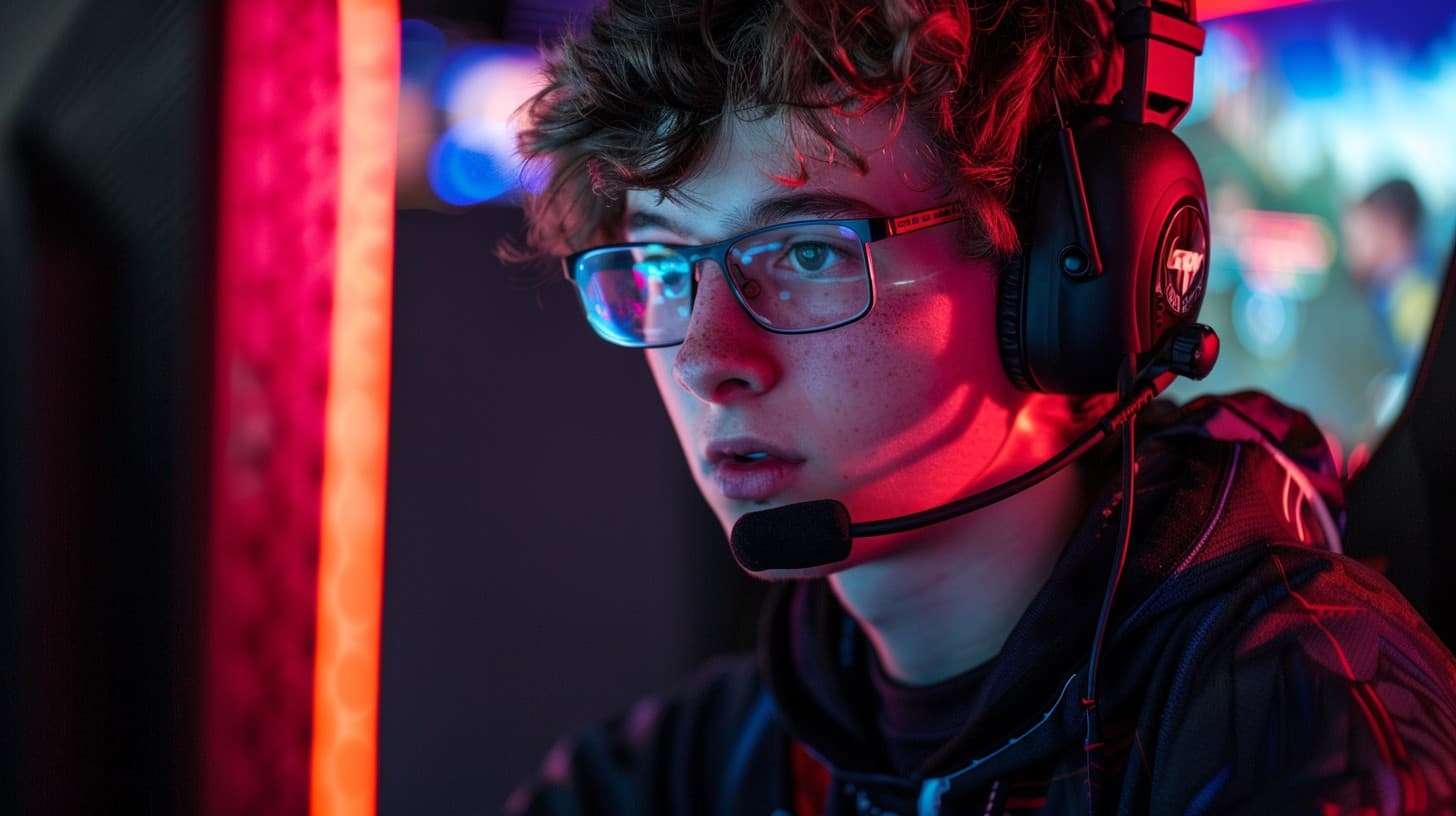
In shooters, where you stand matters big time. Think about nabbing the high ground—you’ll have a bird’s-eye view, granting vision over larger areas. That split-second advantage can mean life or death. But it’s not just about the physical position; it’s about situational awareness — keeping track of enemy movements, predicting their strategies, and making informed decisions based on the current state of play.
But don’t sleep on cover either—hug those walls tight when bullets start flying, peeping out only to take those all-important shots. Balancing the high ground advantage with effective use of cover and a keen sense of situational awareness makes you a formidable opponent on any battlefield.
Understanding the high ground advantage
High ground advantage is huge in shooter games — it gives you a better view, makes you harder to hit. Grab that elevation whenever possible.
Controlling high ground areas puts opponents at a disadvantage. They’ll struggle to find cover, escape becomes trickier… you gain a positional edge. Mastering high ground gameplay separates the pros from noobs in fps titles.
Utilizing cover effectively
Having a high ground advantage is great, but…cover is equally vital for improving accuracy. Proper utilization of cover lets you control engagements, mitigate risks, and stay alive longer – giving you more chances to land those all-important shots.
- Identify cover spots – Walls, boxes, corners…anything that blocks enemy line-of-sight is potential cover. Learn where these are on each map.
- Use cover to peek – Don’t mindlessly spray from cover. Peek out, take a couple shots, then duck back in. Rinse and repeat.
- Relocate between shots – Peeking from the same angle repeatedly is predictable. Reposition between engagements to stay unpredictable.
- Account for penetration – Some surfaces can be shot through. Avoid relying solely on thin cover like wood or drywall.
- Pre-aim common angles – When reaching a new area, pre-aim at the spots enemies will likely appear from. React faster.
- Hold tight angles – Hug cover tightly, minimizing your exposure. Wider gaps between you and cover are riskier.
- Utilize smokes/flashes – Obscure vision to reposition or push through chokepoints without taking fire.
Mastering cover isn’t just about hiding – it’s dictating the engagement flow on your terms. Proper use keeps you alive, controls combat timing, and helps you hit those clean headshots.
The Role of Game Settings
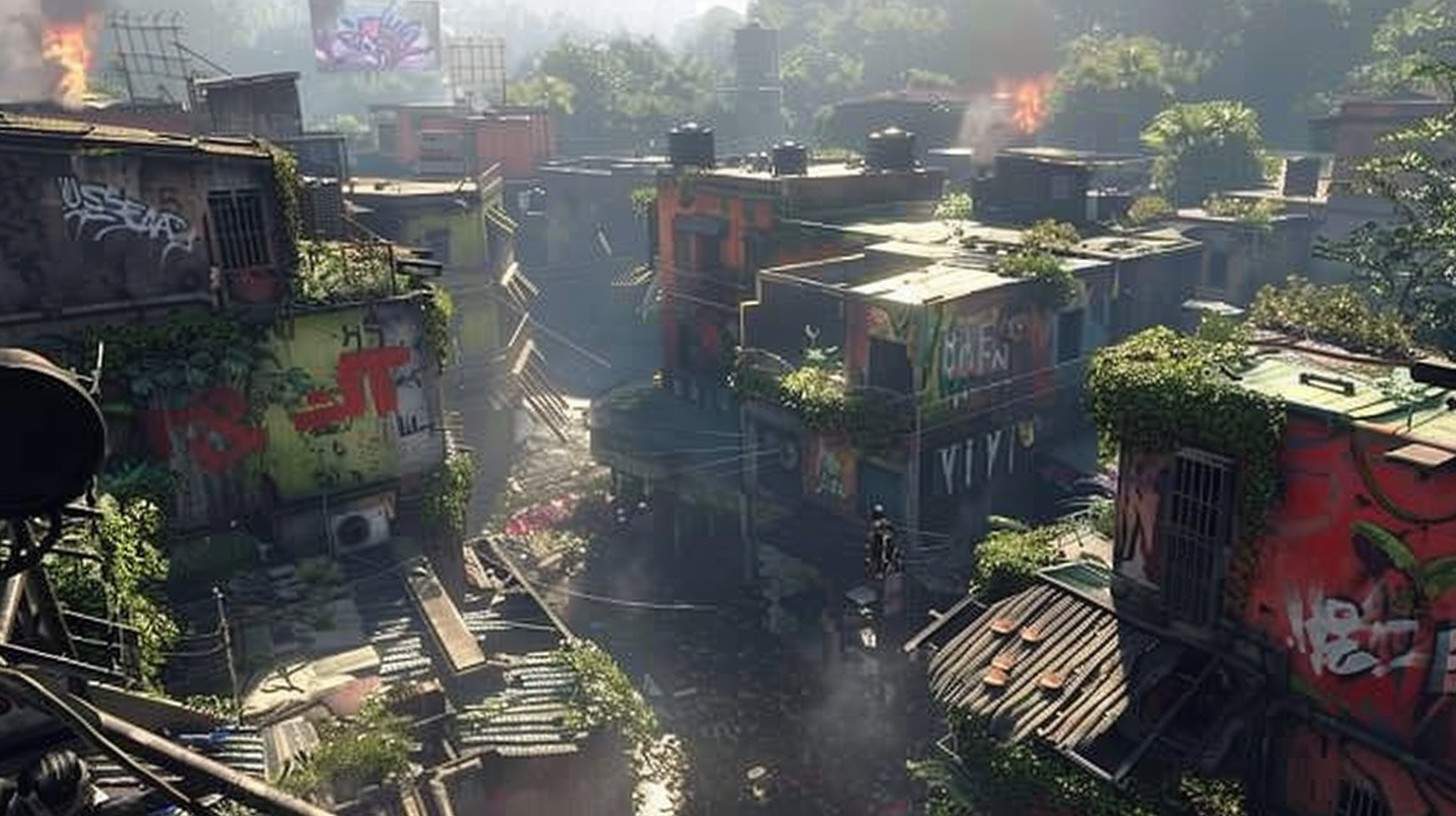
Your game settings can boost your performance. Tweaking graphic options or adjusting keybinds — find what works best for you.
Adjusting graphic settings for better performance
Optimizing your game’s graphic settings is vital—that’s your first accuracy upgrade. Why? Cluttered visuals distract, reducing reaction time. Strip down to essentials: minimal effects, lower resolutions if needed.
You’ll gain crispness, clarity—easy target acquisition.
Don’t ignore this low-hanging fruit; a smooth experience empowers peak performance. Nailed the visuals? Excellent—let’s move on to customizing your crosshair.
Keybinding for efficiency
After optimizing your graphic settings, another key area to focus on is keybinding. Customizing your keyboard layout can significantly boost efficiency — making split-second moves effortless.
Here are some tips:
- Map critical actions to easily accessible keys
- Movement keys should be intuitive…near your resting fingers
- Offensive abilities on thumb buttons or spacebar
- Defensive skills on keys you can reach without re – positioning
- Separate keys for similar functions
- Don’t bind crouch and prone to the same button
- Differentiate grenade types for smoother throws
- Rebind uncomfortable default keys
- The “Use” key is often awkwardly placed
- Find a spare key near your movement cluster
- Create custom keybinds for advanced techniques
- Bind jump-throws, bunny-hops, reload-cancels to spare keys
- Streamline intricate movement mechanics
- Use software for comprehensive remapping
- Unbind unnecessary functions to open keys
- Assign macros for multi – key combos
Tailoring your controls removes awkward contortions mid-fight. Efficient keybinding shaves precious milliseconds off reactions — the difference between trading kills or getting decimated. Take time to find an ergonomic setup; your gameplay will flow smoother.
Practice Makes Perfect
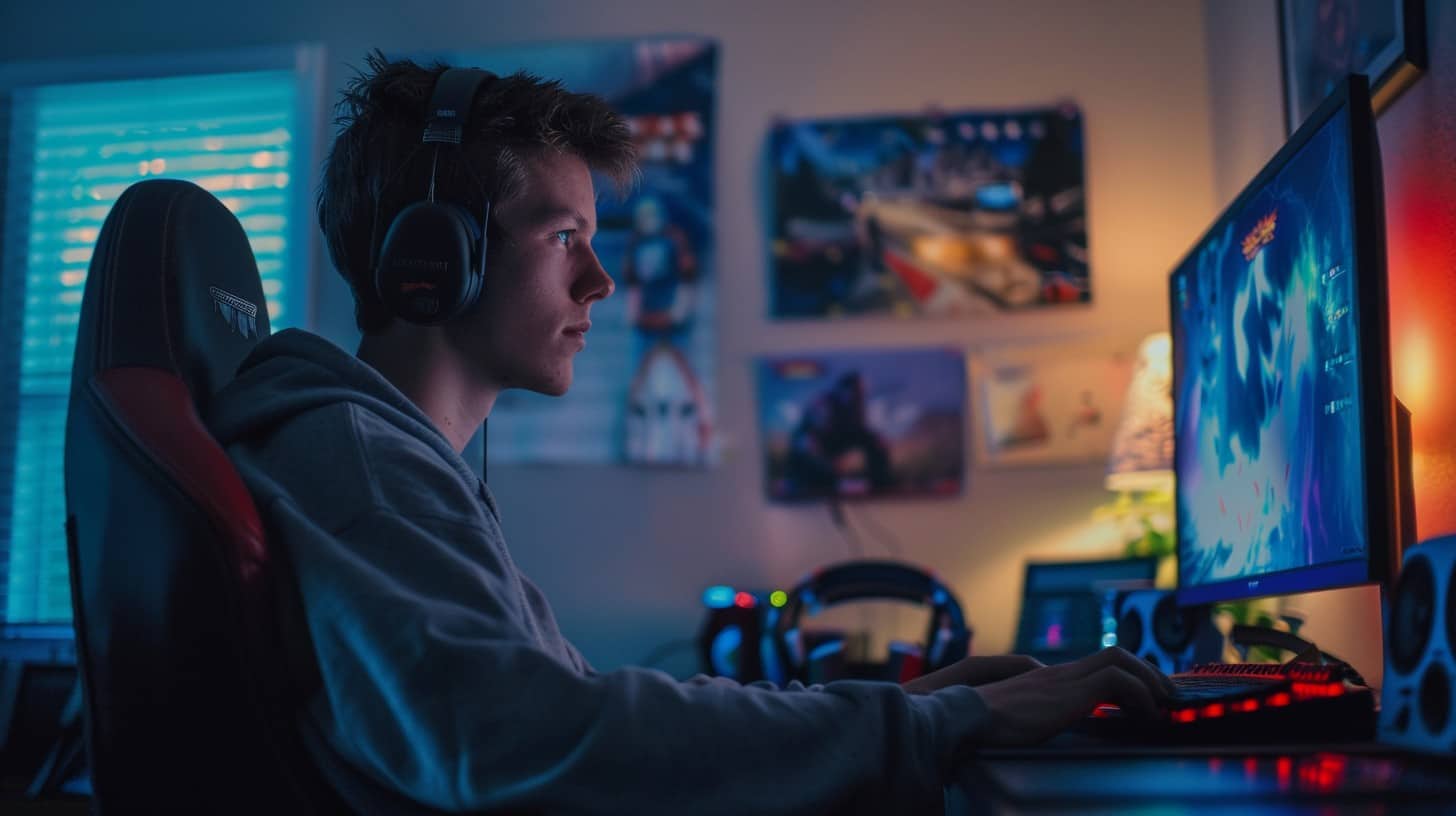
Practice makes perfect – yeah, it’s a cliché… but damn, is it true for shooter games. You can read every guide out there, but nothing beats the progress you make by putting in the hours.
Set aside regular sessions to drill aim, movement, map knowledge – whatever your weak points are. It pays off big time.
Don’t get discouraged if you’re not instantly headshotting everyone – real improvement takes time. But stay persistent, keep practicing those key skills… and you’ll be frying noobs before you know it.
Regular practice sessions
Regular practice sessions are the key to improving accuracy in shooter games. Consistency is crucial.
Here’s what you need to know:
- Dedicated routine – Set aside specific times for practice, treating it like a workout regimen…a little every day adds up.
- Drill variety – Mix different aim trainers, deathmatch modes, workshop maps to target distinct skills – tracking, flicking, recoil control etc.
- Focus areas – Analyze your gameplay, identify weaknesses…then structure drills addressing those pain points.
- Measurable goals – Having tangible targets motivates you, tracks progress effectively – e.g. hitting a certain score on an aim trainer.
- Incrementalism – Don’t jump into intense scenarios right away, build up gradually…mastering basics solidifies the foundation.
- Pressure practice – Once comfortable, replicate high-stakes moments through deathmatch, retakes to acclimatize.
- Mindset matters – Stay positive, don’t get discouraged…it takes time to groove muscle memory for precision aiming.
- Regular review – Periodically reassess gameplay, refine drills based on areas needing more work.
Consistency trumps everything – regular bite-sized sessions cement the habits better than marathons once in a while. It’s a grind, no shortcuts…but the payoff in ranked shows.
Participating in warm-up games
Consistent training is crucial, no doubt — but warm-up games offer a unique edge. They help bridge the gap between regular practice sessions and intense gameplay.
Warm-up games are short bursts that:
- Allow you to fine-tune mouse sensitivity, ensuring your aim is on point before diving into the action.
- Familiarize you with maps, callouts, and high-traffic areas — building precious map awareness.
- Get your mind primed for strategic positioning, crosshair placement, and staying calm under fire.
- Provide a low-stress environment to test different crosshair styles, experiment with keybindings.
Think of them as a “rehearsal” before the main event. You wouldn’t perform on stage without a sound check, right?
Pros swear by warm-up routines — channels filled with their “ritual” pop up regularly on Discord. Some go for aim trainers, others prefer deathmatch modes…find what clicks.
The key? Consistency. Make warm-ups a habit, an integral part of your gaming routine. Those few minutes could spell the difference between flawless headshots and…well, being the one taking bullets to the face.
Watching professional gameplay
Watching professional gameplay takes your skills to the next level. It lets you dissect every move, every decision.
Here’s how it can help boost your shooter game accuracy:
- Observe positioning – note how pros utilize cover, hold angles, and control map areas for maximum impact. Their positioning gives them the edge in firefights.
- Study recoil control – top players make recoil look nonexistent. Analyze their mouse movements, crouching patterns to master this crucial skill.
- Learn pre-aim techniques – see where pros keep their crosshairs at all times. Pre-aiming common angles keeps them ready to strike.
- Pick up new mechanics – spot any special tricks, movement techs, or unconventional strategies the pros use. Adopting them expands your toolkit.
- Understand team plays – communication, utility usage, trading kills – elite teams coordinate flawlessly. Emulating their synergy elevates your gameplay.
- Gain map knowledge – watch how they navigate, where they throw nades, set up crossfires. Grasping these nuances is invaluable.
- Notice habits, tendencies – maybe a pro peeks a certain way or clears corners methodically. Mimicking good habits solidifies your fundamentals.
The key? Don’t just watch – actively analyze, take notes on what impresses you. Implementing even one pro technique at a time can significantly sharpen your skills.
Understanding their strategy and technique
One smart way to elevate your game? Study the pros. Their strategic approach, positioning, and movement around the map… it’s a goldmine of insights. Notice how they hold angles, when they peek, how they use utility.
These little nuances separate good players from great ones. And hey, once you grasp their thought process behind each play, implementing it yourself gets way easier.
Speaking of implementation, don’t just blindly copy, though. Analyze why certain techniques work for them – their playstyle, sensitivity settings, even mouse grip could differ from yours.
Investing in Quality Equipment
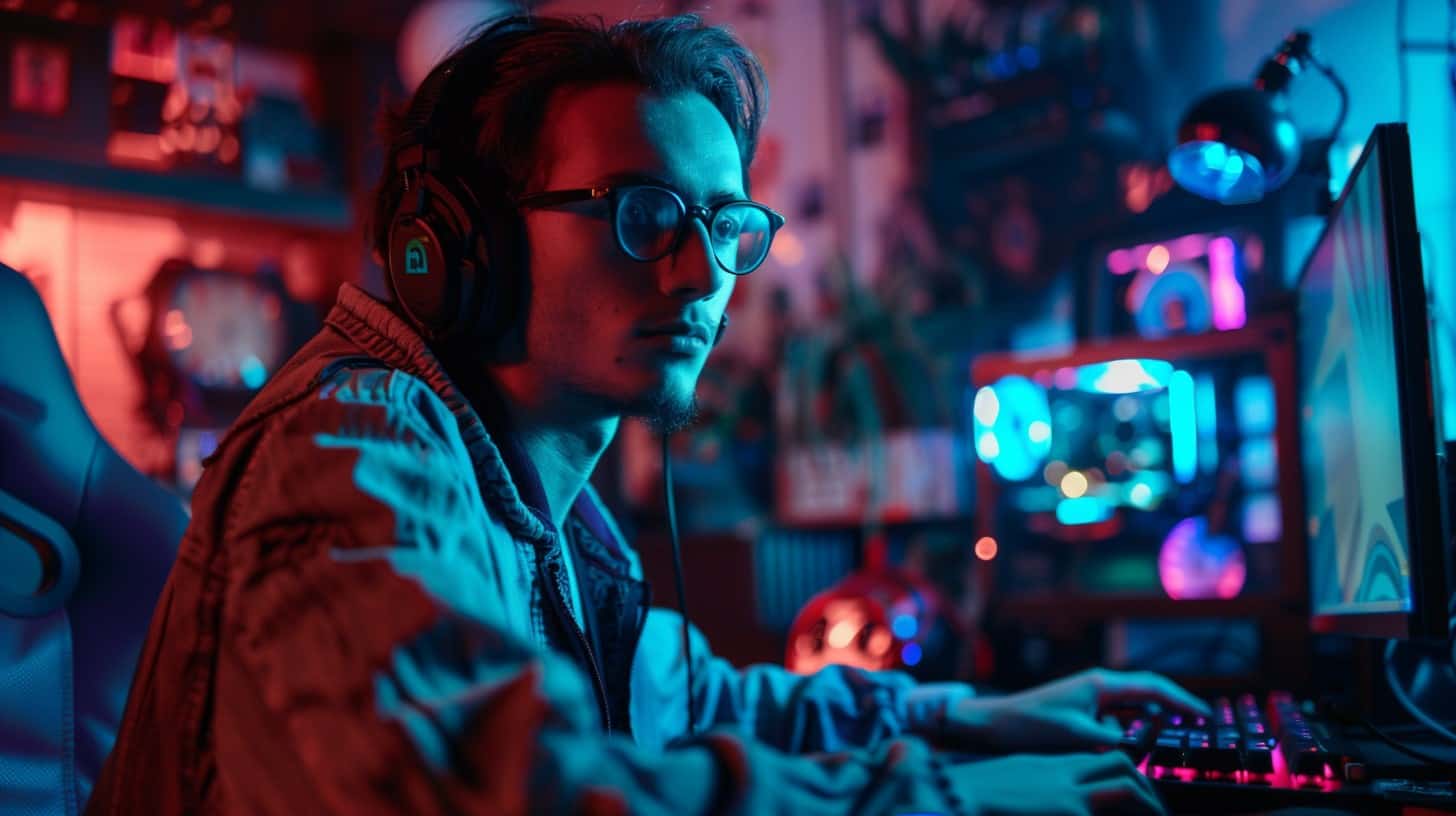
Quality gear matters – a good gaming mouse and headset take your skills to new heights. You’ll nail those headshots and react faster with a slick setup.
Choosing the right gaming mouse
Picking a gaming mouse is serious business – you want something that fits your hand like a glove. It’s not just about looks, either… ergonomics matter big-time. An uncomfortable mouse will cramp your style – and aim – faster than you can say “headshot.”.
A quality mouse sensor is key too. Optical sensors are the gold standard these days, but laser sensors can work well too – just avoid those cheap office mice, they’ll let you down when the action heats up.
Customizable weights and grips help you tailor the mouse to your preferences..it’s worth taking the time to get it dialed in. Comfort and precision are non-negotiable for a top gaming experience.
Importance of a good headset
Alongside a proper gaming mouse, a top-notch headset is equally vital — it’s an audio edge that can amplify your skills. Clear sound cues let you pinpoint enemy movements, gunfire locations, and environmental details with laser precision.
A quality headset immerses you deeper in the game world, boosting focus and reaction times. Don’t underestimate the advantage crisp audio brings..it could mean the difference between victory and defeat.
Look, gaming headsets aren’t just for chatting with your squad, they’re a tactical tool that gives you a leg up on the competition. Cheap earbuds or speakers simply won’t cut it — you need that high-fidelity 3D soundscape to track threats from every angle.
FAQs About How To Get Better At Shooter Games
What are some tips to improve accuracy in FPS games like CS:GO?
Yo, let’s talk FPS games – the key to nailing those headshots is all about mastering the game mechanics. Don’t just spray and pray, take your time to line up those crosshairs. Oh, and don’t sleep on those perks – they can give you a serious edge.
How can I get better at using shotguns in shooter games?
Shotguns are a different beast, my friend. You gotta get up close and personal – no sniping from across the map. Practice your movement, learn those tight corners, and don’t be afraid to get in their face. Just watch that spread, it’ll make or break ya.
Is there a way to improve my aim without playing the game?
Sure thing! Check out some aim trainers or even Wikipedia for tips on mouse sensitivity, crosshair placement, and all that jazz. But at the end of the day, nothing beats good ol’ practice in the actual game. Hop in, get those reps in, and watch your skills skyrocket.
What’s the most important aspect of improving accuracy in shooter games?
It all boils down to one thing – consistency. Stick to your favorite sensitivity, practice those flick shots, and don’t get too fancy with your setups. Muscle memory is key, so find what works for you and keep grinding. Before you know it, you’ll be poppin’ heads like a pro.
